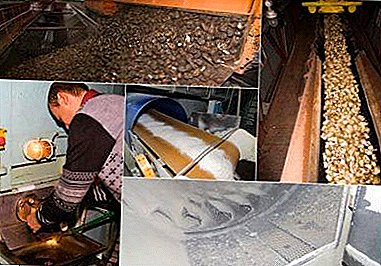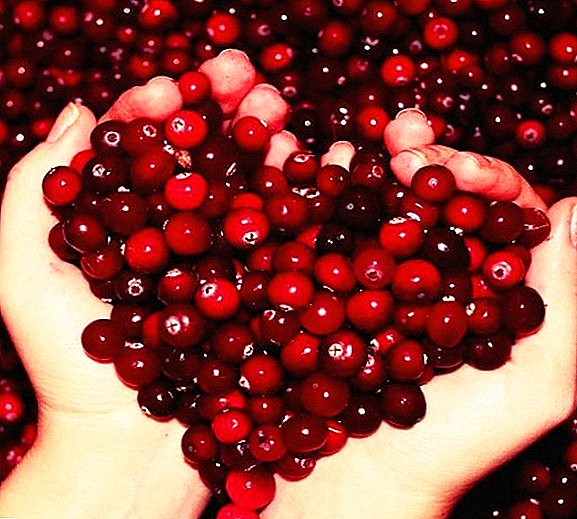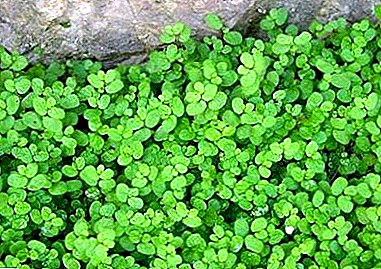 Chemeritsa is often associated with the popular cure for alcoholism. But, according to experts, this fame is appropriated to the herbaceous perennial undeservedly. In fact, the plant is very poisonous. At the same time, it remains an indisputable fact that its widespread use in various spheres of human activity. What the herb is, what it can cure, how to prepare the drug, and to whom such therapy is contraindicated - we will describe this later in the article.
Chemeritsa is often associated with the popular cure for alcoholism. But, according to experts, this fame is appropriated to the herbaceous perennial undeservedly. In fact, the plant is very poisonous. At the same time, it remains an indisputable fact that its widespread use in various spheres of human activity. What the herb is, what it can cure, how to prepare the drug, and to whom such therapy is contraindicated - we will describe this later in the article.
Description
Not everyone could see how this perennial plant of the Melantiev family blooms. In its fifty years of life, it can only release its long multicolored panicles 1-2 times. And all because the helper's bloom re-bloom occurs in 20-30 years. Therefore, you need to focus on the stems and leaves.
In addition to Chemeritsa, the Melantiev family also includes such plants as the colchicum, gloriosa, tricyrtis, and uvularia, which are mostly common in the Northern Hemisphere.
Botanists secrete about 27 species of hellebore (Veratrum). All of them, like other members of the family, are characterized by a high aerial part and a short rhizome.  Grass stalks develop to a height of one and a half meters. They are densely covered with enclosing folded rigid leaves of elliptical shape. In the lower part, the leaf plates reach 30 cm in length and are covered with felt pubes on the back side, and narrow and bare to the top. A characteristic sign of hellebore is uneven arrangement of foliage, which is grouped in several pieces. Because of this, the grass is easily distinguished from the yellow gentian.
Grass stalks develop to a height of one and a half meters. They are densely covered with enclosing folded rigid leaves of elliptical shape. In the lower part, the leaf plates reach 30 cm in length and are covered with felt pubes on the back side, and narrow and bare to the top. A characteristic sign of hellebore is uneven arrangement of foliage, which is grouped in several pieces. Because of this, the grass is easily distinguished from the yellow gentian.
Important! When the hellebore particles hit the mucous membranes of the eyes, nose and mouth, there is a strong burning sensation, sneezing, coughing, nosebleeds and unpleasant sensations in the throat. It is important in such situations to wash the affected areas with plenty of running water.
Gentle green, white or dark red flowers appear on the tops of shoots in July. In the inflorescence they are planted in bunches. Each size up to 1 centimeter. Perianth consists of 6 leaves. Inside 6 stamens, pistil with upper 3-celled ovary and 3 posts. Proceeding from this feature, many botanists transfer grass to the Seedless family. Flowering lasts until the end of summer.  In August, on the site of inflorescences the fruits of hellebore ripen. This is a box with winged seeds. Propagated by the plant seed method, as well as the division of rhizomes.
In August, on the site of inflorescences the fruits of hellebore ripen. This is a box with winged seeds. Propagated by the plant seed method, as well as the division of rhizomes.
The root system develops to a length of 20 centimeters. It is characterized by a fleshy structure and a multitude of outgoing shoots up to 3 millimeters thick.
Chemeritsa is not afraid of frost, unpretentious to the conditions and soil.
Like Chemeritsa, frost-resistant plants are also: lilac, spirea, turf white, barberry, mountain ash, viburnum and wild cherry.
Where grows hellebore
You can see Chemeritsa in temperate and subtropical zones of Eurasia and the North American continent. Her native elements are damp meadows, grass marshes, floodplain meadows, pastures, well-lit forest lawns and mountainous areas. Loves places with nearby groundwater currents.
Euphorbia, aster, verbascum, veronica, gaillardia, carnation, gelenium, hibiscus, gravilat and delphinium also, like hellebore, sun-loving plants for which a large amount of sunlight creates good conditions for growth.
In Europe, the inhabitants of the middle mountain and alpine belts are well aware of this grass. The plant can rise to a height of up to 2 thousand meters above sea level. Most often appears in small groups.  The northern hemisphere of the planet can be divided into zones, in which certain species of hellebore preferably grow. For example, the white Veratrum has chosen the foot of the Alpine Mountains in Western and Central Europe, the black variety is more common in Russia, China and Japan, lobelia prefers Central and Eastern Europe.
The northern hemisphere of the planet can be divided into zones, in which certain species of hellebore preferably grow. For example, the white Veratrum has chosen the foot of the Alpine Mountains in Western and Central Europe, the black variety is more common in Russia, China and Japan, lobelia prefers Central and Eastern Europe.
Important! Only adults are allowed to collect the raw materials of veratum and only after passing the necessary briefing.
In Ukraine, perennial grows in the Carpathian Mountains. And in Russia it can be found right on the territory of Western and Eastern Siberia. 
Chemical composition
All kinds of hellebore are poisonous, but some of them are used in medicine. It is proved that toxic substances are contained in any part of the perennial. We are talking about 8 steroid alkaloids, whose composition is rapidly increasing in the spring. It:
- Yerwyn;
- Rubiervine;
- term;
- hermidine;
- veratrin;
- veratridine;
- proterin;
- protoveratrin (the most dangerous for humans and animals).
 In total, the roots contain up to 2.5% alkaloids, in the stems - up to 1.5%, in the foliage - up to 0, 55%. In addition, pseudo-vervine, isorubierin, veratrozine (glycoalkaloids) were found in the grass. The safest in the composition of the hellebore are:
In total, the roots contain up to 2.5% alkaloids, in the stems - up to 1.5%, in the foliage - up to 0, 55%. In addition, pseudo-vervine, isorubierin, veratrozine (glycoalkaloids) were found in the grass. The safest in the composition of the hellebore are:- amino acids;
- gum;
- resins;
- tannins and dyes;
- sugar;
- fixed oils;
- vitamins;
- mineral salts;
- starch;
- triterpenes;
- organic acids;
- tannins;
- glycosides.

Healing properties of herbs
Chemeritsa is very peculiar and requires special care. The alkaloids contained in its composition, depending on the proportion used, can bring both benefit and irreparable harm. It has been experimentally proven that the plant has the following effects on living organisms:
- increases the amplitude of the heartbeat;
- lowers systolic and diastolic arterial blood pressure;
- dilates blood vessels (in large quantities causes bradycardia);
- reduces diuresis;
- irritating the nerve endings, provokes vomiting;
- reduces the excitability of the vasomotor center;
- exhibits choleretic and diuretic properties;
- provides bactericidal activity and anti-inflammatory effect;
- has a ruminator effect on ruminants;
- possesses antiparasitic and antimycotic effect;
- relieves pain of neuralgic and rheumatic nature.
Also provide a diuretic effect: apples, buckthorn bark, linden, sedge, boxwood, red elderberry, safflower, persimmon, asparagus, black radish and juniper.
Due to the high toxicity of the internal grass is not taken. It is even excluded from the official pharmacopoeia. In folk medicine practiced external use of tinctures, ointments, decoctions, extracts for the treatment of inflamed tonsils, joints, pediculosis, scabies, rheumatism, eczema and allergic reactions. 
How to prepare Chemeritsa
For medicinal purposes, use only the rhizomes of the grass, because they contain the most alkaloids. Taking into account the fact that at the beginning of spring the amount of these substances reaches a maximum value, experts call September and October the best period for harvesting raw materials.  Hellebore root
Hellebore root
For this purpose, you need to dig a plant, so as not to damage its underground part. Remember that the length of the root shoots reaches 20 centimeters. These thin threads break off easily. When the root is outside, shake it off the remnants of the soil and cut the stem shoots.
Important! When harvesting raw hellebore, take care of your own protection measures. All work with grass should be carried out in gloves or thick rubber gloves. When putting a dry potion over or pouring it, be sure to put on your glasses and tie a nose and mouth with a wet cloth.
For medicinal practices, only the fat part is needed. In the future, it is cut lengthwise with a shovel and washed in cold water. Then the raw materials need to be dried up. This is done in a well-ventilated attic, away from direct sunlight and dusty roads.  Dry billets are important to inspect for signs of mold. If necessary, the affected areas are removed. After that, hellebore can be collected in a paper or cloth bag for storage. It is important that the raw materials do not come into contact with other medicinal herbs.
Dry billets are important to inspect for signs of mold. If necessary, the affected areas are removed. After that, hellebore can be collected in a paper or cloth bag for storage. It is important that the raw materials do not come into contact with other medicinal herbs.
For your own safety, it is better to place the billet in a separate, well-ventilated place. In this case, do not forget about the rules of saving toxic substances. Shelf life of raw materials will end in 3 years.
Did you know? The ancient Greeks and Romans used poisonous properties of hellebore. From the roots of the grass, they prepared a deadly poison for individuals that were not acceptable to the emperor, as well as for rats and fleas.
Application of hellebore
The belief that a poisonous champion drug can cure alcoholism is firmly established in the people. Rumor has it that it is enough for a drunkard to mix herbal tea or extract with alcohol. The drinker will not feel the smell or taste of a third-party impurity, but soon he will begin to have acute signs of poisoning: vomiting, nausea, diarrhea, his pulse will slow down and his blood pressure will drop.  That's the whole therapeutic effect. Its strength lies in the psychological impact on a person with alcohol dependence.
That's the whole therapeutic effect. Its strength lies in the psychological impact on a person with alcohol dependence.
Having survived all the intoxication, probably the next time the drinker will be afraid to even touch the glass with the bruise. Doctors are sounding the alarm, because it is not the first year that they have been trying to refute this life-threatening fallacy. In the meantime, hundreds of poisoned people continue to come to hospitals during the "rescue". Unfortunately, many die of cardiac arrest. Therefore, it is not necessary to experiment with dangerous grass on the health of relatives and friends.
Did you know? In ancient times, the poisonous aceeric juice was smeared with a spearhead of arrows and mines.
Chemeritsu can be applied externally. Moreover, it is used in many spheres of human life. It is important to be careful. Let us analyze where and when this plant can be useful. 
In medicine
Most often, for therapeutic effect of the dried herbal raw materials prepare alcoholic tincture. To this end, the root is crushed to dust to make 2 tablespoons of powder. After that, it is poured into a glass container with a lid and filled with purified medical alcohol (40%). Infuse the liquid should in a darkened and warm place at a temperature of + 20-24 ° C.
Did you know? According to ancient mythology, the great soothsayer and healer Melamp treated insanity with the help of decoction of hellebore. In those days, it was believed that ailments are provoked by impurities that have accumulated in the body: viscous mucus, monthly blood and "abdominal obstructions". The applied potion caused the patient to vomit, thus “cleaning” his body from the causes of the disease. Ancient healers followed the example of Melamp until the 19th century, offering veratum pills to patients for melancholy, epilepsy, fever, paralysis, and worms.
After 10 days, the drug must be drained. It is used externally for eczema, allergies, rheumatism, and also to combat skin parasites. The treatment involves treating the affected areas with a cotton swab moistened with medication.  Also, folk healers practice the use of ointment. It is prepared by mixing 150 g of cemeric powder (the preferred form of lobelia), 150 g of crushed dry leaves of wild rosemary and 500 g of pork lard. All ingredients are thoroughly mixed until a homogeneous consistency.
Also, folk healers practice the use of ointment. It is prepared by mixing 150 g of cemeric powder (the preferred form of lobelia), 150 g of crushed dry leaves of wild rosemary and 500 g of pork lard. All ingredients are thoroughly mixed until a homogeneous consistency.
Then the mixture is desirable to put in a few hours in the oven. The finished substance must be rubbed into the skin for rheumatism, pediculosis and scabies.
Did you know? The ancient Indians from the North American continent used the hellebore as an indicator of endurance. It was believed that the most immune to the poison of the plant deserves the post of chief of the tribe. Therefore, all applicants were forced to eat a poisonous root.
In veterinary medicine
This plant often cures wounds, provokes vomiting and belching in ruminant cattle, and also with its help fights against fleas. Most often used alcohol tincture. It is prepared by mixing powdered dry hellebore root with 70 percent alcohol in a ratio of 1:10. Insist liquid 10 days in a dark and warm place.  The tool must be poured into the mouth of a sick animal, previously diluted with 50-500 milliliters of water. Its quantity depends on the body weight of the animal: the larger it is, the more water is needed. In order to provide maximum assistance to the ward, follow the following dosages:
The tool must be poured into the mouth of a sick animal, previously diluted with 50-500 milliliters of water. Its quantity depends on the body weight of the animal: the larger it is, the more water is needed. In order to provide maximum assistance to the ward, follow the following dosages:
- horses, for cows and other large cattle for every kilogram of live weight measure 0.01-0.024 ml of tincture;
- goats sheep and other small cattle will need 1 kg of body weight 0.04-0.08 ml of medication;
- pigs ―0,014-0,028 ml per kilogram of live weight;
- to dogs - 0.05-0.2 ml per kilogram of live weight.
In addition, in the fight against blood-sucking parasites practiced spraying animals with a solution of the alcoholic meterial tincture. The proportion is the same as in the previous method. Some sprinkle the backs of pets with root powder. 
In gardening
Flower growers and gardeners often use the hellebore decoction in the fight against spider mites, earwigs, aphids, caterpillars, slugs and other pests as a cheap biological insecticide. For the preparation of a protective agent, it is recommended to use lobelia roots, ostrodolny, cup-colored or dausky hellebore.
Did you know? Before the first imperialist war, the Germans used dust from the Chemican root as a tear agent. After a collision with such a serious obstacle, British troops declared the seeds of the plant a military smuggling.
Dried raw materials are crushed to a powdery appearance and poured a glass of boiling water in a ratio of 1:10. The mixture is boiled for half an hour on low heat. Then cool and spray the affected plants.
In cosmetology
The plant can be used to stimulate hair growth. For this purpose, 50 g of dry raw materials are boiled over low heat in a glass of table vinegar. The process lasts as long as the contents do not boil down in double volume. While preparing the hellebore potion, measure 25 g of dry Althea root, pour 150 g of boiling water. Let it sit a little.  Then strain both fluids and put together. The resulting tool should be rubbed into the hair roots throughout the month. For best effect, the procedure is preferably repeated daily in the morning and evening.
Then strain both fluids and put together. The resulting tool should be rubbed into the hair roots throughout the month. For best effect, the procedure is preferably repeated daily in the morning and evening.
To improve the condition of the hair is widely used: essential oil of pine, green radish, rosemary, persimmon, zizifus, bergamot, okra, nasturtium, beeswax and cactus.
Contraindications and side effects
Before any use of hellebore, it is imperative to consult with a qualified specialist. The plant is very dangerous. If you have problems with the cardiovascular system, it is better to refuse such therapy altogether.  When working with herbal perennial observe precautions. After all, even a small droplet of caecal juice that has fallen on the skin can cause a loss of sensitivity in a certain area of the body.
When working with herbal perennial observe precautions. After all, even a small droplet of caecal juice that has fallen on the skin can cause a loss of sensitivity in a certain area of the body.
Important! Strictly contraindicated any actions with poisonous grass pregnant and lactating women.
Improperly prepared drug causes severe intoxication. Within an hour, a patient who has taken the medicine by mouth has the following symptoms:
- vomiting;
- nausea;
- cramping abdominal pain;
- headache;
- dizziness;
- skeletal muscle rigidity;
- convulsions;
- visual impairment;
- discomfort in the limbs.
 At the first symptoms, it is important, without losing time, to call a doctor and provide the victim with first aid. It consists in gastric lavage, as well as intake of enterosorbents and salt solutions.
At the first symptoms, it is important, without losing time, to call a doctor and provide the victim with first aid. It consists in gastric lavage, as well as intake of enterosorbents and salt solutions.Otherwise, acute cardiovascular and respiratory failure is very likely. In severe cases, death is inevitable.
Did you know? A solution of infusion of green hellebore is deadly to cockroaches.
Marvelous perennial has unique properties, but if you do not have enough knowledge and skills to use it, it is better to bypass the poisonous grass side. No wonder she never touches the cattle.
Video: useful properties and application of hellebore
Feedback from network users about Chemeritsa

The main active principle of hellebore is the alkaloids in its composition, and their content is especially high in the roots (up to 2.4%), less in the rhizomes (up to 1.3%), and in the grass - up to 0.55%. The main structural core of all studied alkaloids of hellebore are alkamines, or amino alcohols. Hellebore alkaloids reduce blood pressure, while significantly increasing the amplitude of heart contractions, irritate the end of the sensory nerves, cause severe sneezing and coughing. Chemeritsa is a highly poisonous plant, it is superior to hemlock in strength of poisonousness. Most often it is used externally as an analgesic and irritant in the treatment of various diseases of the joints (gout, arthritis), with neuralgia, myalgia, radiculitis, rheumatism. Use ointment, decoction and alcohol tincture of hellebore.













